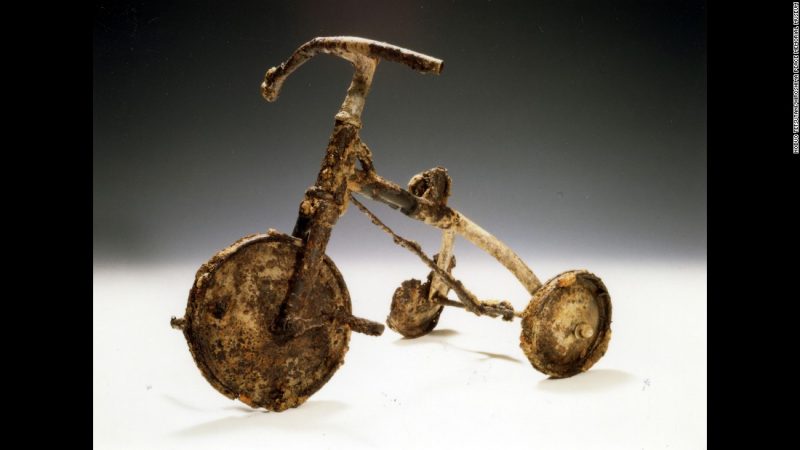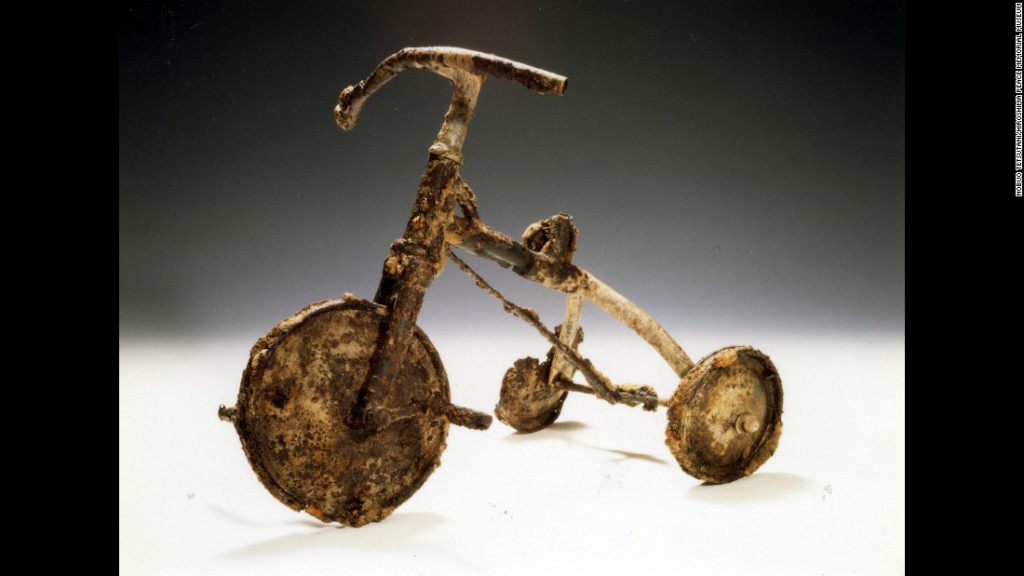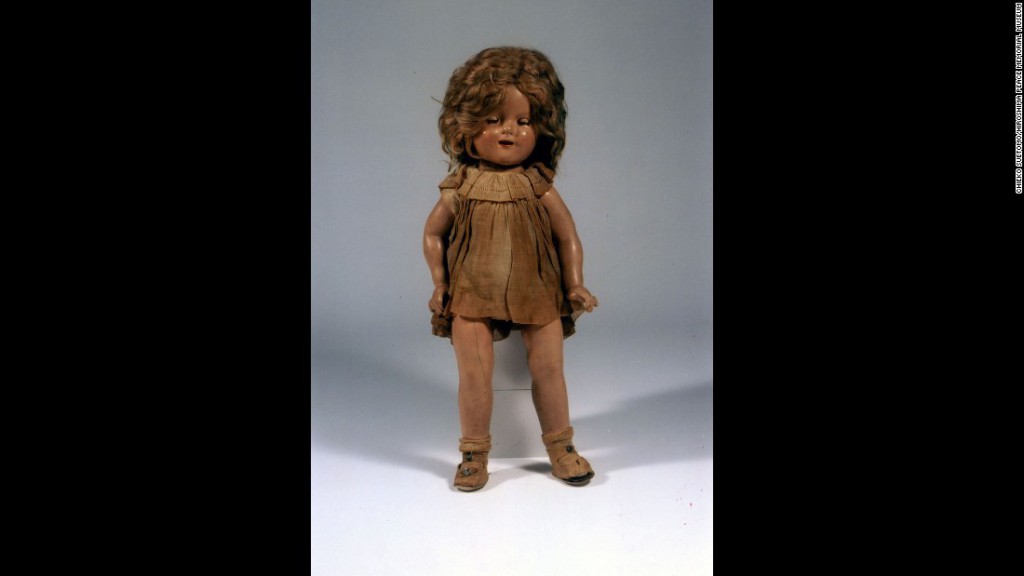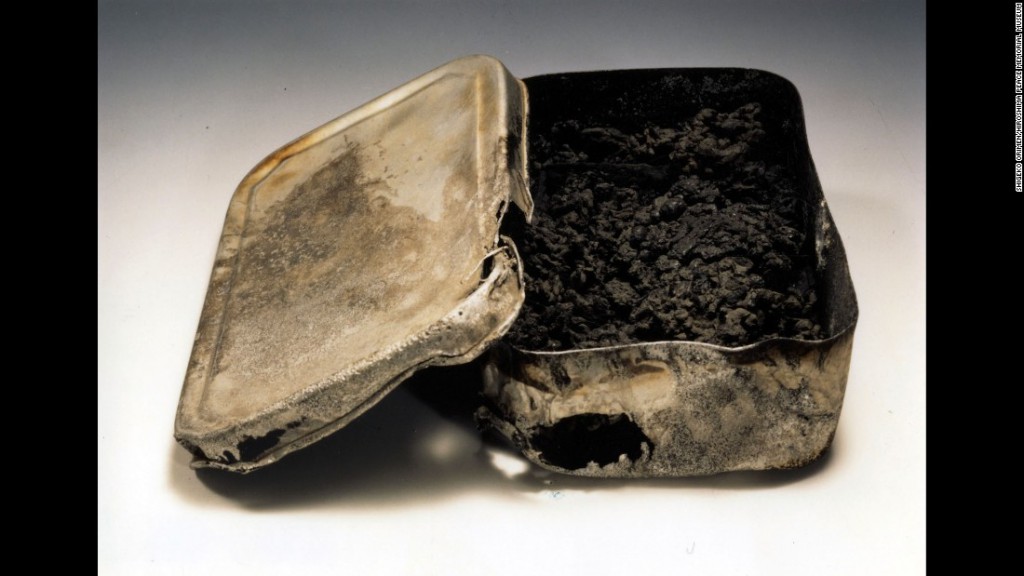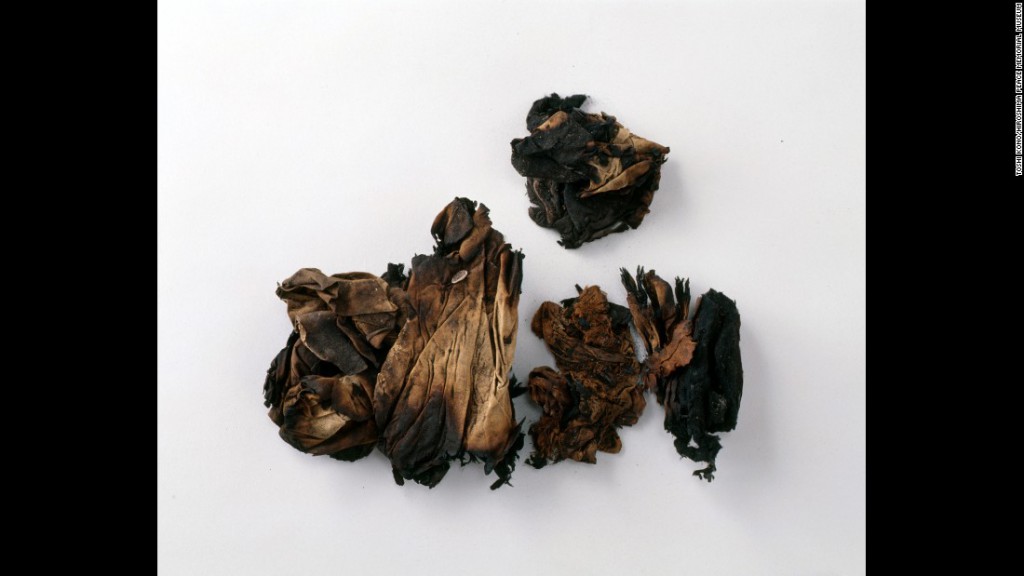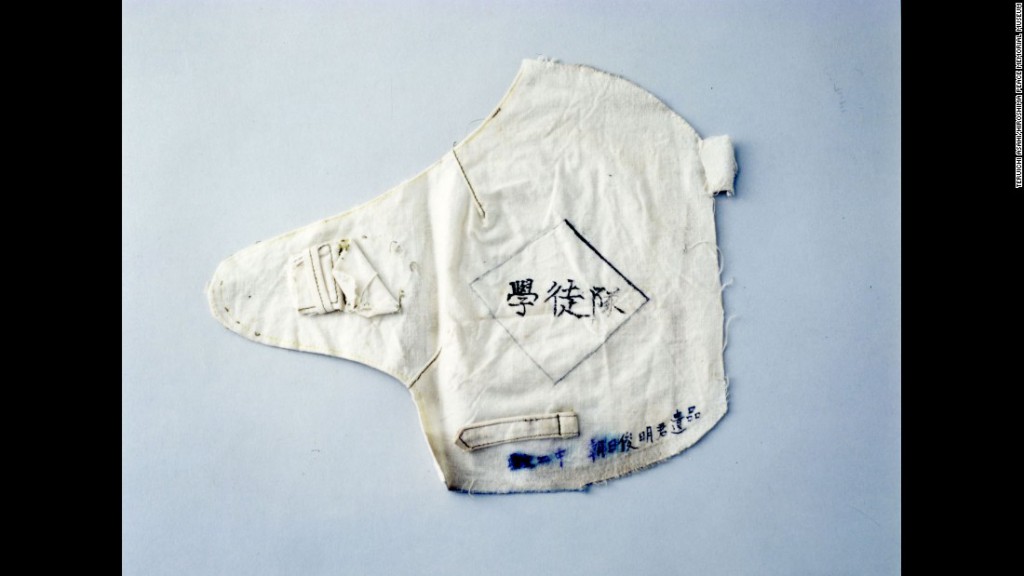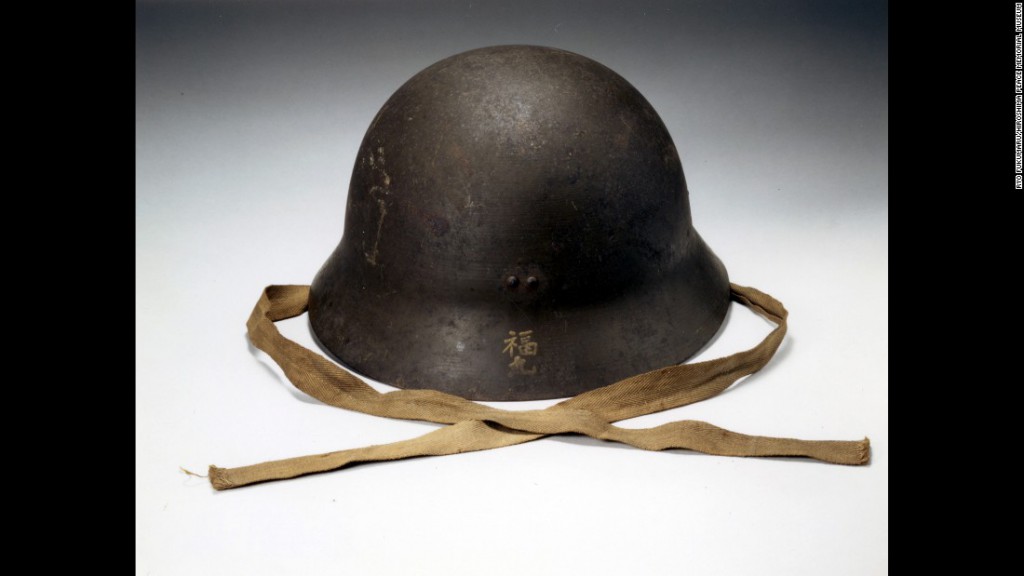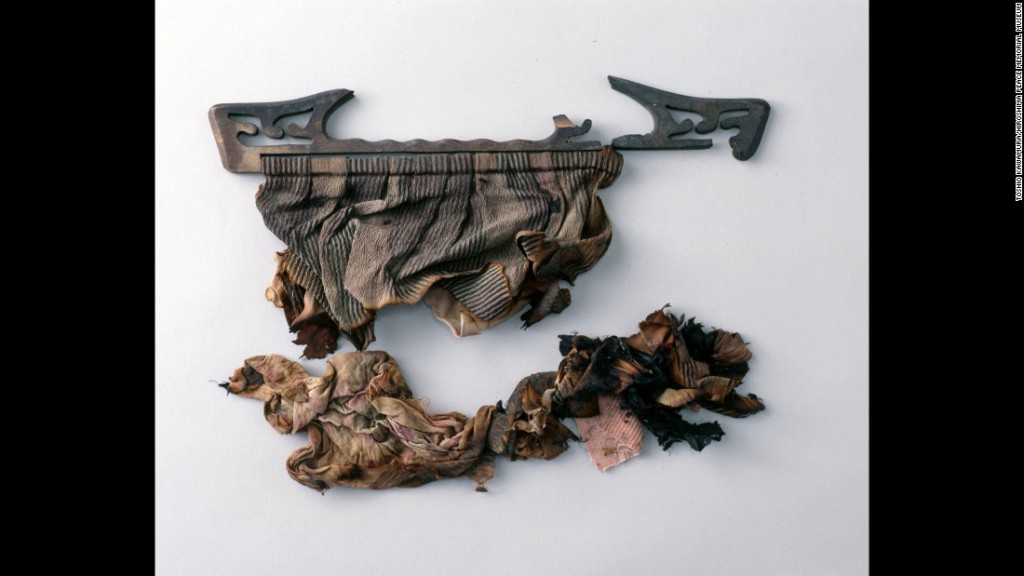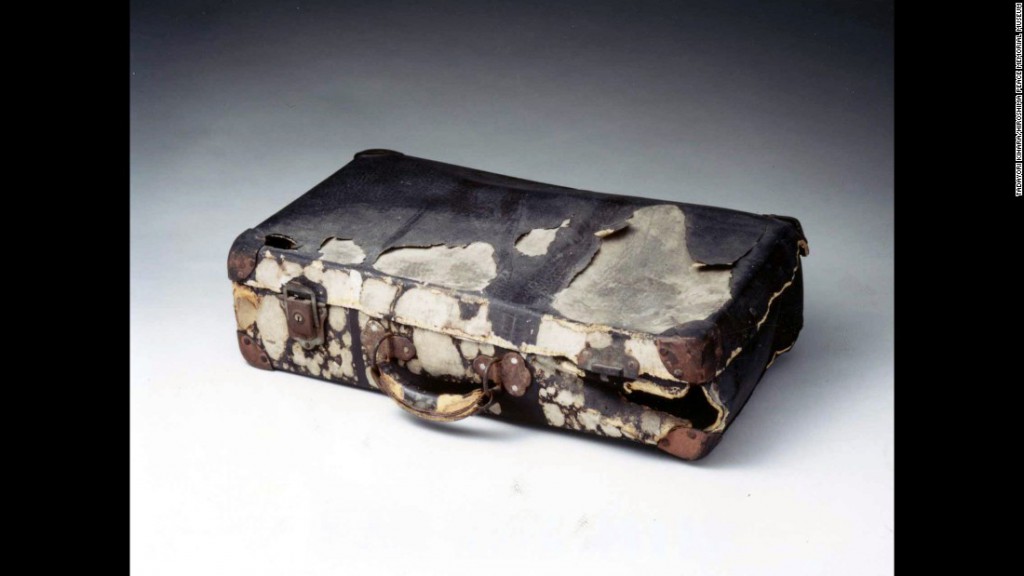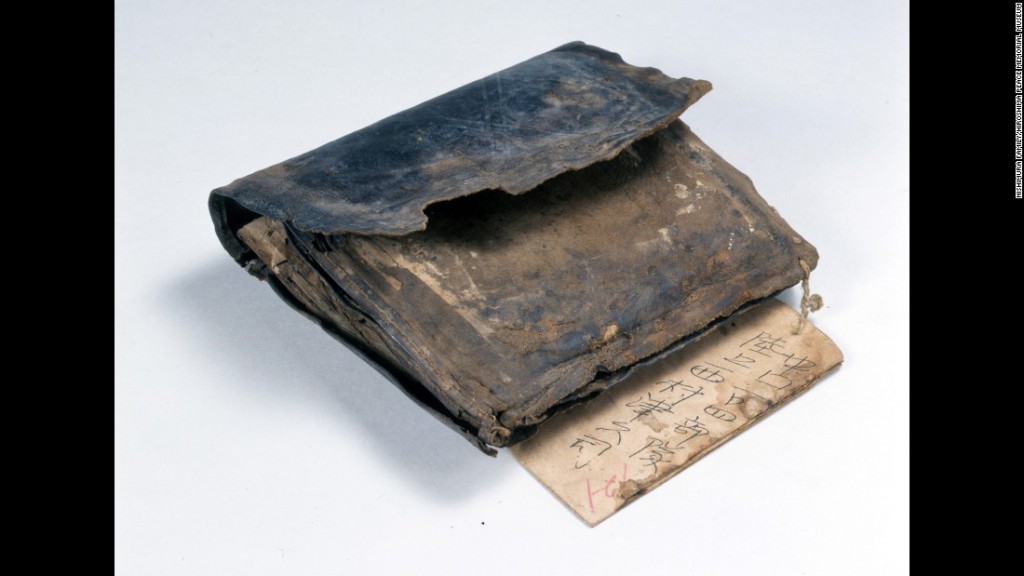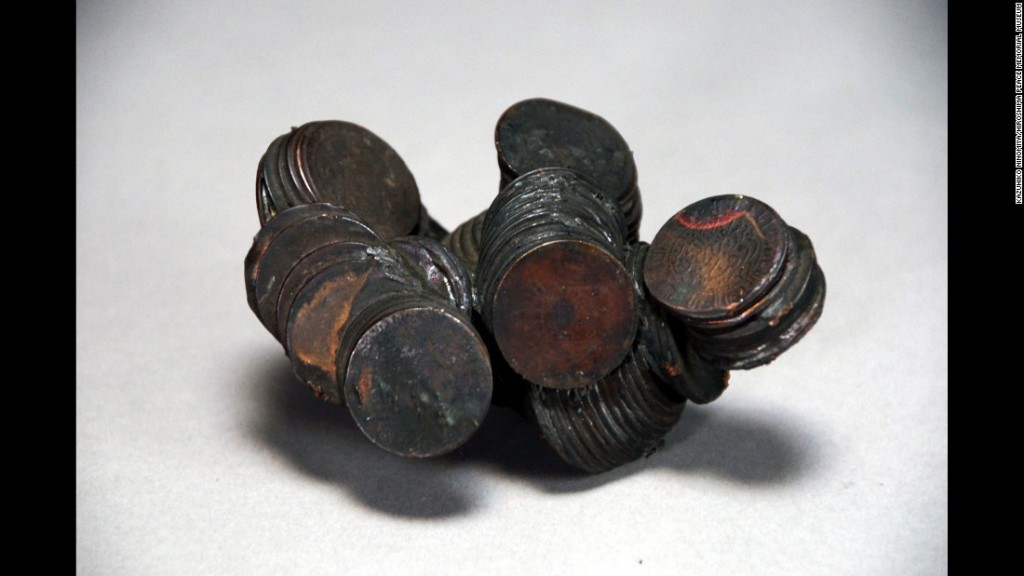Seventy years have passed, generations have changed, new devastating wars are in our horizon, and the memory of Hiroshima slowly fades.
However, artifacts and survivors still provide tangible links to the world’s first act of nuclear warfare.
The world still has a hard time to understand the horrible events in Hiroshima, Japan, on August 6, 1945, after a U.S. warplane dropped the most powerful weapon ever produced on military targets and unsuspecting civilians.
Those who survived say it started with a brilliant, noiseless flash. They remember a massive wave of intense heat that turned clothing to rags. People closest to the bomb were immediately vaporized or burned to ashes. There was a deafening boom and a blast that — for some — felt like being stabbed by hundreds of needles. source
The story behind this artifact was published as a children’s book by survivor Tatsuharu Kodama in 1995. “Shin’s Tricycle” tells what happened to a 3-year-old boy named Shinichi Tetsutani.
It’s narrated by Shin’s father, Nobuo Tetsunani, who describes the morning shortly before the attack as a calm and sunny day. “The air was filled with the sandpapery sounds of cicadas rubbing their legs together in the nearby trees,” the book said.
Shin and his best friend, a girl named Kimi, were outside the family’s home, playing with his favorite toy — a tricycle with red handlebars.
At 8:15 a.m., the bomb detonated. And everything changed.
The blast collapsed the house, creating an “explosion so terrible, a flash so blindingly bright. I thought the world had ended,” the boy’s father said in the book. “Then, just a quickly, everything went black.”
Shin was missing in the chaos immediately following the attack. His family frantically searched for him among the wreckage of his destroyed home. They found Shin pinned under a house beam, badly hurt. “His face was bleeding and swollen,” the book reads. “He was too weak to talk but his hand still held the red handlebar grip from his tricycle. Kimi was gone, lost somewhere under the house.”
“‘Water, I want water,’ pleaded Shin in a faint voice. I wanted to help him so much,” his father said in the book.
“All around, people were dying when they drank water,” Shin’s father said. “So I didn’t dare give him any.”
Shin would not survive the night.
After his son died, Shin’s father couldn’t bare to leave the boy’s body in a lonely graveyard. So the family buried Shin in their backyard, along with his friend Kimi and his beloved tricycle.
In 1985, 40 years later, Shin’s father decided to move his son’s remains to the family gravesite. He and Kimi’s mother helped unearth the backyard grave. There, according to the book, they saw “the little white bones of Kimi and Shin, hand in hand as we had placed them.”
Take a look at some other heartbreaking artifacts.
photos are taken from CNN
